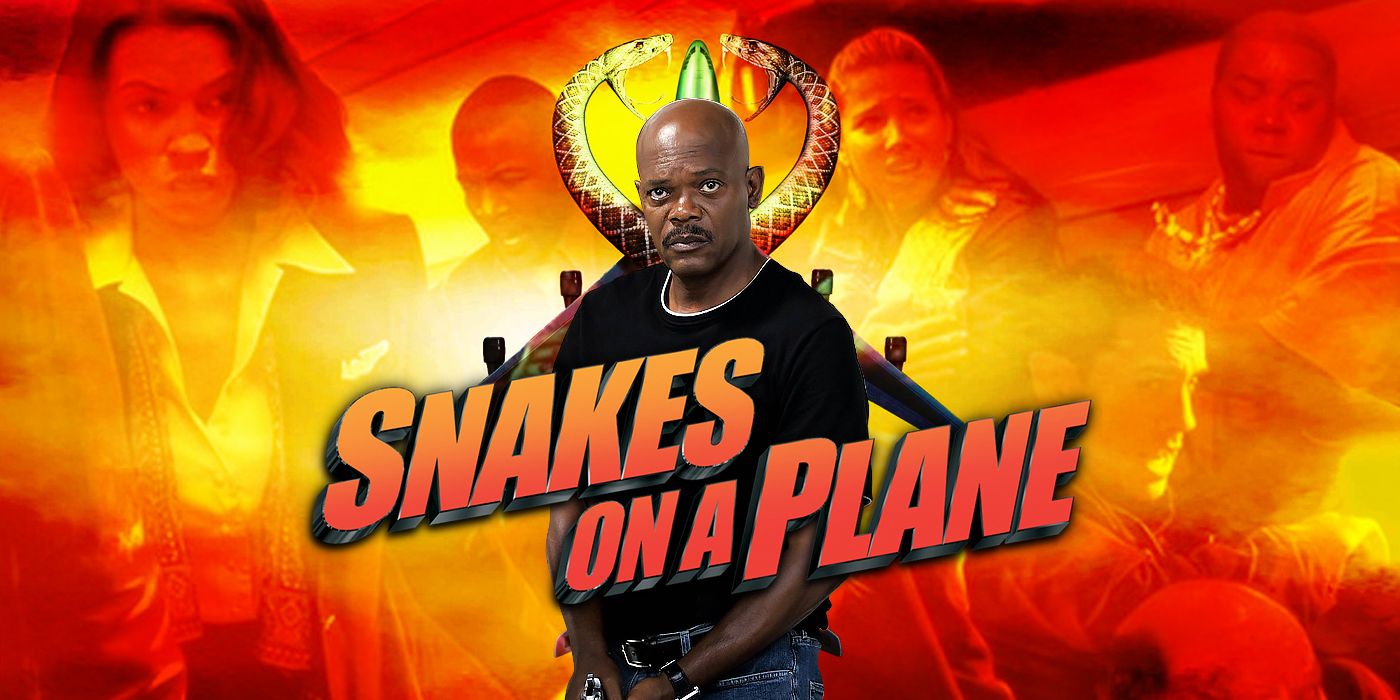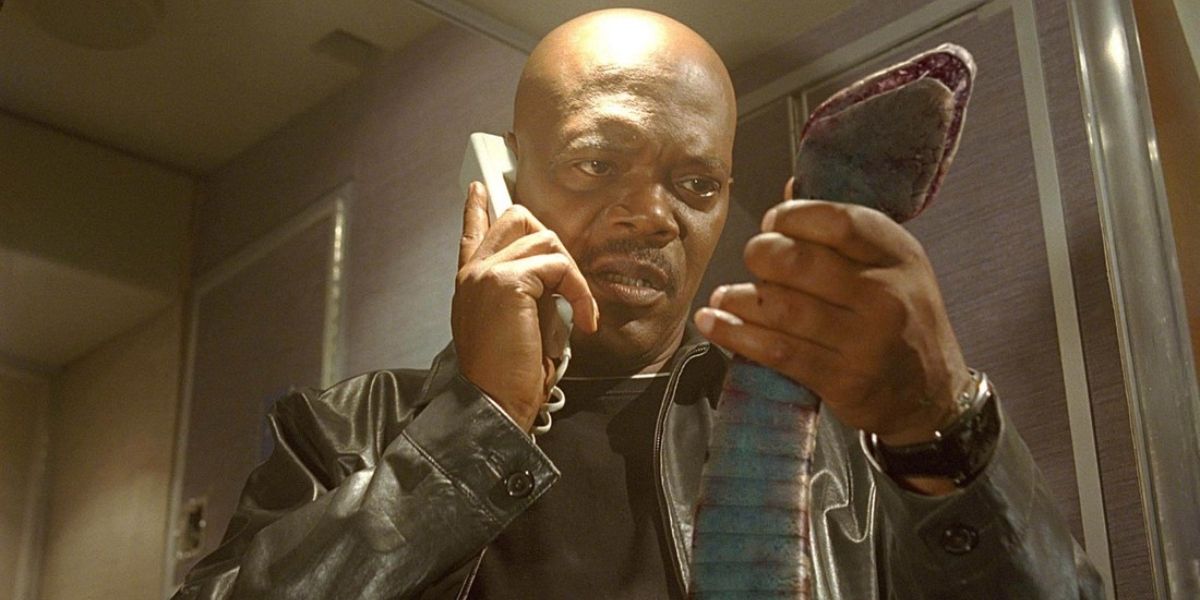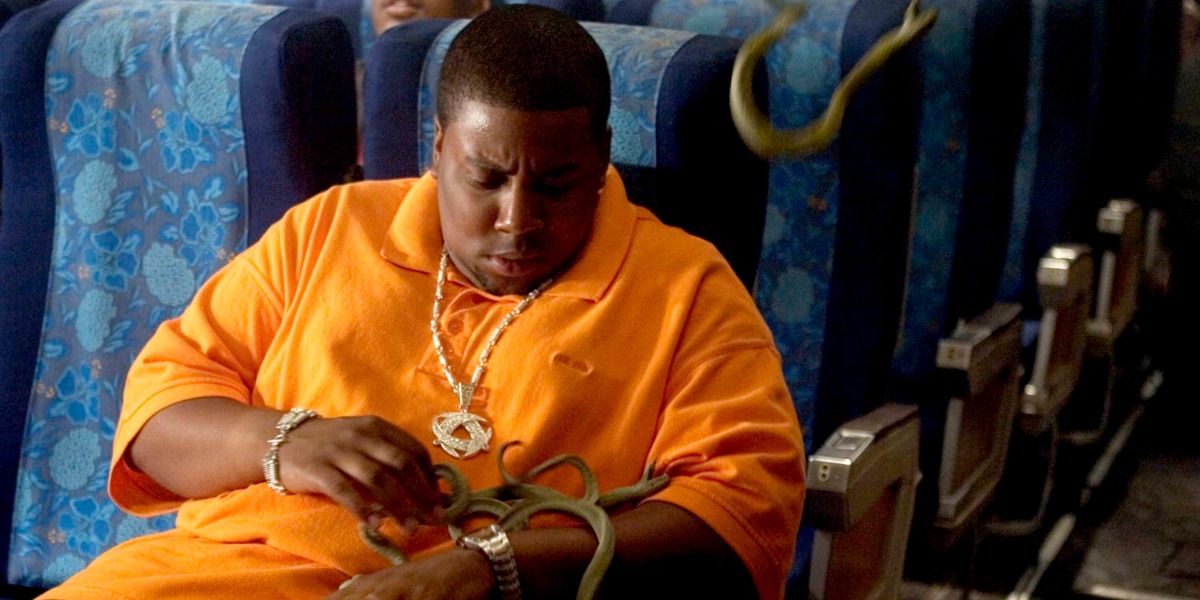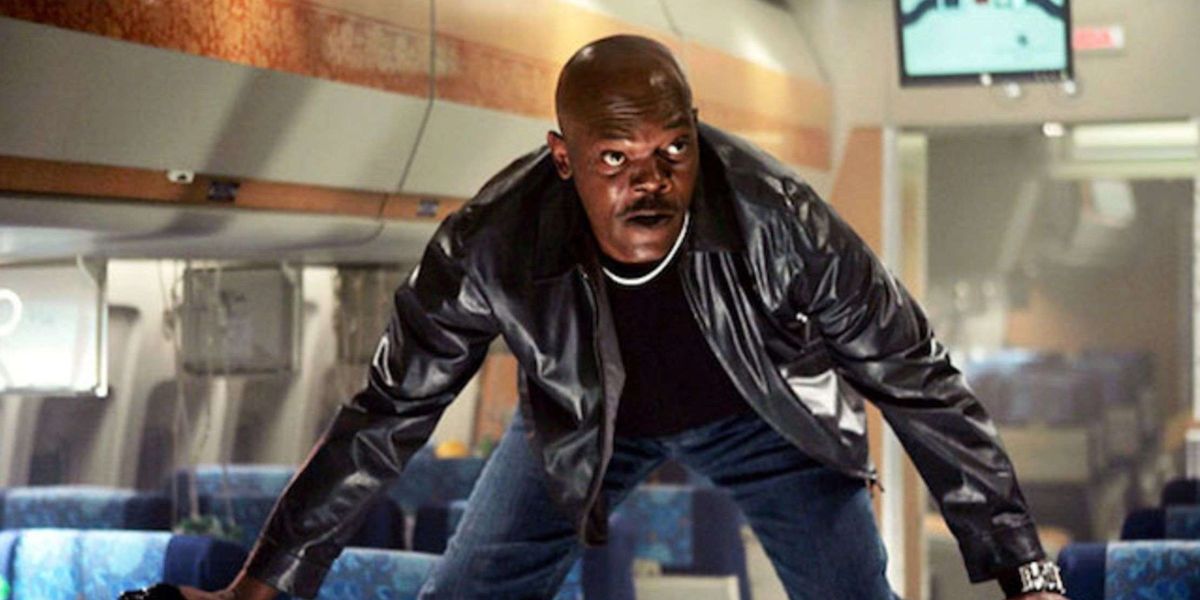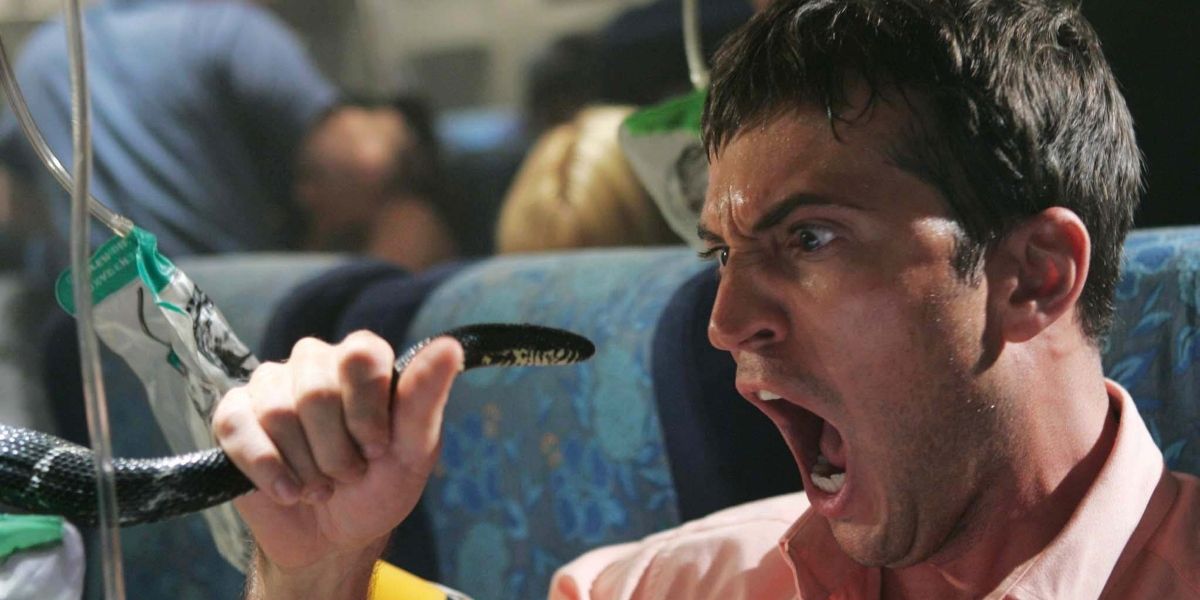It's always fascinating when a film acts as a sensory snapshot of a specific moment in time. It becomes more of an artifact, unearthed by later generations for a taste of exactly what it was to live in that period; what people did, what they wore, what they watched, what they cared about. For example: Snakes on a Plane, the creature-feature about snakes that are on a plane, is impossible to separate from the concept of "2006." Snakes on a Plane is 2006, 2006 is Snakes on a Plane. Were the film Snakes on a Plane to gain sentience and become a real human man he would be wearing a white belt and listening to Akon's "Smack That" on a bright-blue iPod Nano. ("No homo," he'd tell you, for no discernable reason.) This is largely because Snakes on a Plane wriggled its way, serpent-like, into the very foundation of that year's evolving culture. It was one of the first pre-Twitter films to catch fire primarily because of online word-of-mouth across the blogosphere. As the internet became the place to share an opinion, Snakes on a Plane re-defined "hype." It rose to prominence alongside meme culture until the film itself became more meme than movie, not because of quality but because of sheer shareability. The title was an endearingly easy joke and an easier punchline; "Snakes on a Plane" was shorthand before shorthand became the dominant form of online communication.
The other reason Snakes on a Plane is impossible to tether from the fabric of 2006 is because, despite everything I just wrote above, it still did kind of shitty at the box office, instantly becoming a cautionary tale in chasing a hype train instead of driving one.
This was, as I said, the early-2000s, and thus it started with a blog post. On August 17, 2005—one month after Snakes on a Plane wrapped principal photography—screenwriter Josh Friedman took to his Blogspot* to chronicle the time he came close to working on the script. More than that, though, Friedman succinctly summed up the simple, undeniable joy that comes with a title like Snakes on a Plane. "It's a title. It's a concept," Friedman wrote. "It's a poster and a logline and whatever else you need it to be. It's perfect. Perfect. It's the Everlasting Gobstopper of movie titles."
But most importantly of all, this much-buzzed-about blog post contained the phrase "there are motherfucking snakes on the motherfucking plane," a shout-out to the film's star Samuel L. Jackson, he of Hollywood's most eloquent "motherfucker." This phrase, more than anything, painted a picture in the minds of a quickly-growing audience of what Snakes on a Plane looked like: A gory, tongue-in-cheek B-movie raunchfest as self-aware as its title. It's that image that took the hell off like a rocket, inspiring countless viral Youtube parodies, fan posters, give-aways, and websites, all centered around that title, simple and provocative enough to be turned into anything. Without releasing a single piece of footage, Snakes on a Plane got meme'd into existence.
The problem, at that time, is what Snakes on a Plane was quickly becoming on the internet was absolutely not the movie New Line Cinema and director David R. Ellis just made. Firmly aiming for a PG-13 rating, the production was reportedly mostly spent tamping down everything the internet had come to expect from the movie. "Those were things I was saying the whole time we were shooting, saying that we should shoot them anyway just in case you change your mind," Jackson said in April 2006. "And then they were like, 'Well, no, we're trying to keep this PG,' so they restricted my cursing and restricted the gore. It was kind of a waste of time."
In a profound act of blasphemy, the studio had also changed the film's title midway through production to something far blander, a decision Jackson similarly rebuked in traditional Jackson fashion.
"They wanted to call it Pacific Flight 121," he said. "I told them that was the stupidest damn thing I ever heard."
The story of Snakes on a Plane then became the story of a movie trying desperately to catch up to its own exposure. In March 2006, it was reported—in an article bearing the headline "Fan frenzy for 'Snakes' is on a different plane"—the movie had returned for five days of reshoots, bumping it up to an R-rating with more blood, sex, and profanity specifically to satisfy the feedback the internet was gleefully providing. It was arguably the bluntest, most expensive example of "fan service" in film history. New Line kind of had no choice; the movie they had in the can wasn't the movie that had taken over the collective mind of the internet. They leaned in and the spread grew. The "#1 Fan King Cobra Sweepstakes" appeared on the film's official website, encouraging users to post the link across as many forums as possible. The movie was getting airtime on everything from The Daily Show to MSNBC. An aggressively early-2000s music video was released for the song "Snakes On a Plane (Bring It)" by Cobra Starship, Travie McCoy of Gym Class Heroes, and William Beckett of The Academy Is, which is like The Avengers of people who would lose to My Chemical Romance at the 2006 MTV Music Video Awards. The culture was fully strapped in, on the plane, with the snakes.
And then the movie bombed. Despite hopes for a $30 million opening, Snakes on a Plane nabbed $15 million its first weekend and then plummeted to sixth place in week 2, eventually ending its theatrical run with a Perfectly Okay $62 million. There's a dozen different reasons for this—the rating change couldn't have helped—but anyone around at the time could tell you it really boils down to the fact that, eventually, the meme had to become a movie. And the movie was fine. It's a patchwork quilt of moments a movie studio thought the internet might find cool. Samuel L. Jackson says "I have had it with these motherfucking snakes on this motherfucking plane," which is fun, but maybe just a little less fun than the first 40 times you heard it on Youtube. In becoming an internet sensation, Snakes on a Plane fell victim to its own image, a million different minds crafting a million different versions of the movie months before it debuted, none of which came close to the Frankenstein's monster that hit theaters. People fell in love with the title Snakes on a Plane because it's so effortlessly fun; to watch the film itself sweat bullets to match that feeling was, in the end, just kind of depressing.
There's a direct thread from Snakes on a Plane through the next 15 years of major studio filmmaking; you see it in WB's decision to hit shuffle on Spotify and turn David Ayer's Suicide Squad into a bootleg Guardians of the Galaxy; you see it in the devestatingly lame "see, we can tell jokes!" sweatiness of 2017's Justice League; you hear it blasted from a megaphone in the moment Adam Driver says the words "you're a Palpatine" in The Rise of Skywalker. Studios chase the overwhelming approval it seemed Snakes on a Plane was enjoying, not realizing that concept is a myth; that the competing opinions of a billion different avatars rendures universal "support" as weightless as smoke, and equally as likely to drift away. For a few months there, Snakes on a Plane was the most internet-hyped move of all time. By the time it finally hit theaters, pop culture had already had it with those motherfucking snakes on that motherfucking plane.
[*UPDATE: Upon further inspection, Friedman's initial blog post does, in fact, link to a 2005 Samuel L. Jackson interview with...Collider dot com. So, one could argue that everything that occured here was because of this very website. Apologies.]

